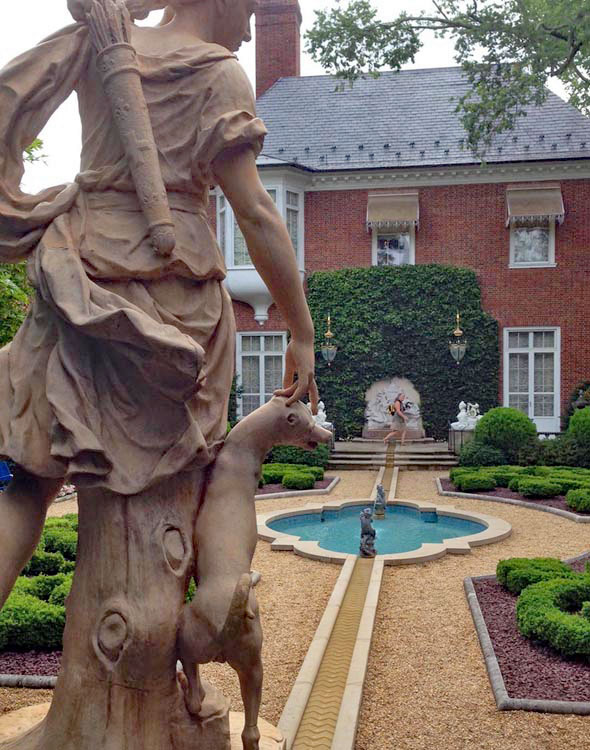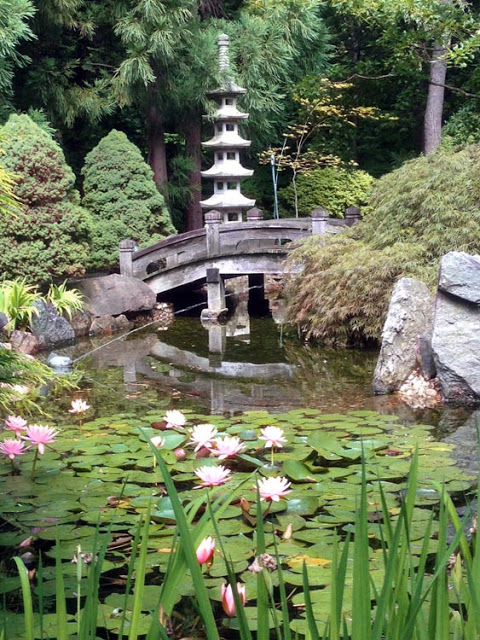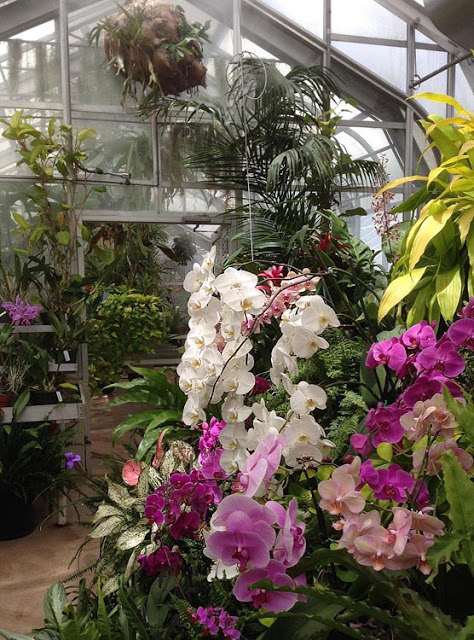In Our Backyard
A Visit to Hillwood
By Linda Puff, Fairfax Master Gardener
In 1955, Abremont, 25 acres adjacent to Rock Creek Park in Northwest Washington, D.C. was purchased by Marjorie Merriweather Post, heiress to the Postum Cereal Company upon the death of her father, C.W. Post. She purchased other food industries such as Bird’s Eye, Jello-O, Hellmann’s and called the conglomerate General Foods. Almost immediately after her purchase, she hired architects to refurbish the 1920’s neo-Georgian style house into a statelier dwelling with the most modern conveniences.

French Parterre
The remodeled house is a stately dwelling that functions as a well-staffed home and a place where Marjorie Merriweather Post’s 18th century French decorative art collection, Russian imperial art and religious objects are showcased. The house also has an efficient and high tech kitchen and pantry, along with many personal touches that make Hillwood one of Washington’s most memorable homes.
The Four Season Gardens

Japanese-Style Garden
There are footpaths and woodland trails with hostas and ferns and a stream tumbling down the hill of the Japanese-style garden. Dahlias, larkspurs, salvias, cockscombs and roses are some of the flowers in the cutting garden. Thousands of vibrant annuals flow all around the property, tumbling down garden walls, surrounding sculptures and against the greenhouses. Tropical plants that wintered under glass are brought outdoors.
Fall
Twelve acres of woodlands filled with oak, red maple, beech, sycamore, cherry, dogwood, hickory, poplar and other deciduous trees that change from green to yellow, red, bronze and bright orange surround the manicured acres. Japanese maples stand out in the Japanese-style garden that is filled with a wide variety of Asian sculptures and lanterns. The ginkgo, one of the oldest trees on the property, never disappoints. In the early fall, the horticulture staff and volunteers change out summer annuals to chrysanthemums that will dominate in the formal gardens. Two thousand mums are planted throughout the estate. Staff and volunteers raise 17 types of mums to be used in the garden and in arrangements.

Orchid Greenhouse
Most plants are dormant in the winter. It becomes a time when the many sculptures throughout the estate and the stone terraces are more evident. Deciduous trees show off their shape, berries attract birds and evergreens welcome furry winter visitors. The greenhouses, which were replaced with a modern structure in 1996, are filled with thousands of orchids and other unusual plants from South America, Puerto Rico and other tropical areas. In January, winter jasmine’s yellow flowers push through the snow. By the end of March, snowdrops and other early small bulbs begin to break through the cold ground.
Spring
Staff and volunteers plant thousands of bulbs in the fall. In spring, tulips appear in the cutting and rose gardens. Small irises peak through the sedum groundcover along the Friendship Walk. Asian sculptures are tucked away in the Japanese-style garden where azaleas, Japanese maples, pines and spruce with contrasting leaf textures are around every bend. Azaleas are the shrubs most synonymous with Hillwood and appear throughout the gardens flowing along the paths. The 9-hole putting green is framed with blooming snowball viburnum. Lavender blooms in the spring cutting garden. Bright yellow forsythias cover the hillside, and daffodils shine at the lower and upper gates to the estate. Different colors of floribunda roses peak in May and fill the Rose Garden. Camellias fill the woods along the paths and roadsides, and the perennials in the cutting garden explode with color.
In 1956, the Friendship Walk, a path from the Rose Garden to a crest overlooking Rock Creek Park, was designed as a tribute to Marjorie Merriweather Post from her friends on her 70th birthday. Significant moments in her life are displayed on plaques placed throughout the Walk. One designed by Mamie Eisenhower is the fourth stanza of the poem, “The Lord God Planted a Garden” by Dorothy Frances Gurney:
The kiss of the sun for pardon
The song of the birds for mirth —
One is nearer God’s heart in a garden
Than anywhere else on earth.
Marjorie Merriweather Post died on September 12, 1973, and her ashes are buried in the foot of an obelisk erected at the center of the Rose Garden. Hillwood Estate, Museum and Gardens opened as a public institution in 1977, and today is maintained by the Post Foundation.
Make a day of it if you decide to visit Hillwood. Tour the house, stroll the gardens and stop by the Cafe Merriweather for lunch or a latte.
Hillwood reopened to the public in July. Reservations should be made as capacity is limited to help with social distancing.
References
• A Garden for All Seasons, Marjorie Merriweather Post’s Hillwood, Kate Markert, 2020
• Hillwood Estate, Museum and Gardens, Washington, DC